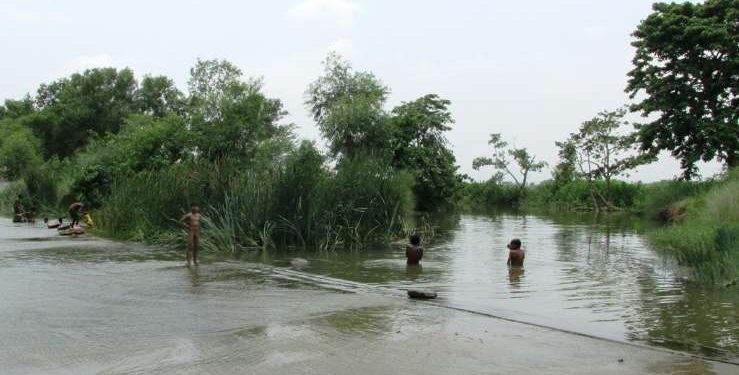Jajpur: Resentment brewed among locals after an Odisha State Pollution Control Board (OSPCB) report found the ‘polluted’ water of three rivers – Brahmani, Baitarani and Kharasrota – and two canals – Gandanala and Damshala – suitable for human consumption.
Several industrial units in this district mindlessly release their waste into these rivers. While people find it difficult to even wash their face in the water of Gandanala and Damshala, OSPCB’s clean chit is unfortunate, said locals.
Some irregularities must have been committed during the examination of the water samples to influence the report, they claimed.
On being directed by the Central Pollution Control Board (CPCB), OSPCB started collecting water samples from 129 monitoring stations of 11 important rivers of the state from May, 2017.
The water samples of Brahmani were collected from Panposh, downstream of Brahmani, Ataghat in Rourkela, Bhuban, Kabatbandh, Dharmasala and Pattamundai. Similarly, Kharasrota water was collected from Khanditara, Binjharpur, Damshala canal water from Dayanabil and Gandanal water from Marthapur in Jajpur district. Baitarani water was collected from Naigada, Unchabali, Champua, Joda, Anandapur, Jajpur and upstream and downstream of the river.
However, the panel found toxic elements released by a steel plant from the samples collected from Panposh downstream. The water samples collected from all other stations were found suitable for human use, according to the findings. The board informed all the civic body authorities of the state through a letter issued in the first week of May, it was learnt.
Meanwhile, people living along Gandanala canal refused to go by the report. They have stopped farming vegetables in over 20,000 acres of land as the canal water has turned toxic, locals said.
“The water of Gandanala generates so much stink that people find it difficult to pass by the canal, let alone drinking its water,” said Karunakar Biswal of Jodabar village.
While farming has been severely hit by the polluted water, residents often suffer from skin disorders after coming in contact with the canal water, some others said, adding, there is something wrong with the report.
A special team of OSPCB had collected water samples from seven stations in December 2015 and the final report suggested that the water had excessive content of phenolic compound and cyanide making the water unsuitable for human use.
Locals now demanded a probe as to how the water suddenly turned fit for human use in just two and a half years.
OSPCB’s regional officer Anup Mallik said the samples have been examined as per guidelines and chances of error are minimal.






































